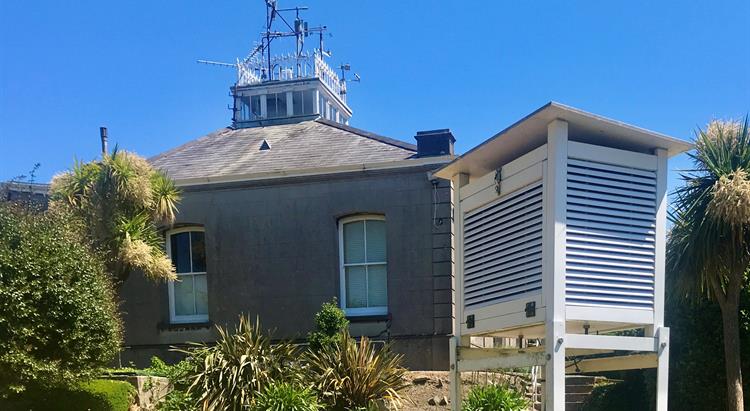12 November 2020

Maison St Louis Observatory, has been recognised for its continuing, and long-standing records as well as best practice in weather observation by the World Meteorological Organisation (WMO).
The WMO works with weather stations across the world to highlight the importance of climate research. As part of this, it recognises long-term observing stations, which have contributed to our understanding of climate and weather and it works to ensure these stations continue to record the weather into the future.
Maison St Louis Observatory, founded in 1894 by Jesuit Father Marc Dechevrens, is one of the 94 meteorological stations around the world (including stations in Burkina Faso, Norway and Kazakhstan) that has been granted centennial recognition by the World Meteorological Organisation.
Currently, the UK has six stations that have received centennial recognition. This year two more are to be added; Jersey’s Maison St Louis Observatory, and Oxford, which is the second-oldest observatory in the world.
Members of the WMO can apply for centennial recognition each year. To qualify, the observation station must meet a list of criteria, including; the station must have been in operation, and observing at least one meteorological element for at least 100 years to the standards required.
Principal Meteorological Officer at Jersey Met, John Searson said: “Having been an Observation station since 1894, it is great to finally have Maison St Louis Observatory centennially recognised by the WMO.
“Long-term meteorological observations are part of our cultural and scientific heritage and allow future generations to learn more about how variable our climate is, and how it has changed over time. The local weather records are used by Jersey Met forecasters on a daily basis and an excellent example of how these long standing records can be used was the work done to show the change in annual mean air temperature for the Island over the last 125 years, displayed as the ‘Jersey Climate Stripes’ painted at the St. Helier Waterfront.”